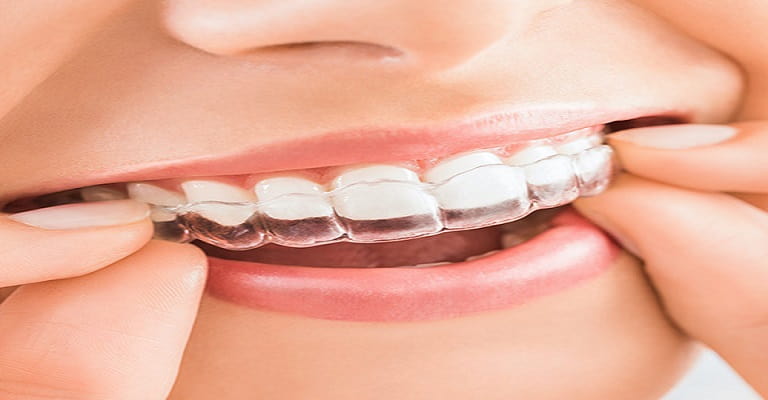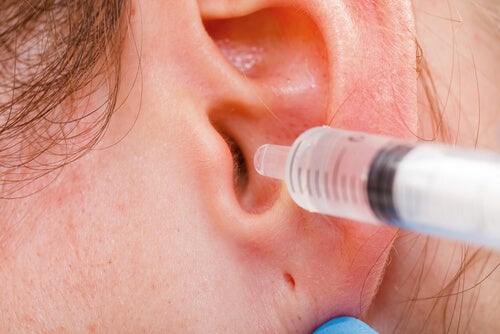What Is The Best Alternative To Braces For Adults?
What is the best alternative to braces for adults? ✅. Not every one thinks braces are “cute” and children often find them to be rather “uncool”. Adults who need to have their teeth corrected often shy away from going to the orthodontist, as they do not want to have “metal brackets” in their mouths. Alternatives already exist – medicine and research have come up with a lot in recent years.
Alternatives to braces for adults
In the end, braces always mean improved aesthetics, the optimization of pronunciation or the function of the hygienic ability of the patient’s teeth. But almost no one wants to have an “apparatus” in their mouth that is visible from afar over a long period of time and prevents or makes perfect pronunciation and dental hygiene difficult? There are now several good alternatives that are suitable for both children and adults and are far ahead of the “old” braces in terms of application, external appearance, visibility and maintenance.
Innovative material developments, worldwide networking and technical advances in orthodontics have ensured in recent years that adults of advanced age can also have their misaligned teeth corrected later. The days of fixed braces are long gone. In the well-known “multiband technique“, individual brackets were glued to each tooth, connected with wires and tightened at regular intervals. Everyone could see the braces. Today’s alternatives, on the other hand, are almost invisible, removable and individually adapted.
1. The lingual technique
Here the brackets are not attached to the front of the teeth, but behind it – i.e. on the side of the tongue. The entire braces are not visible to the viewer from the outside. While these advantages have convinced many users, there are also a few disadvantages: In addition to the rather high laboratory costs, pronunciation can be significantly impaired in the first 6-12 weeks. Because the tongue is in constant contact with the brackets inside and has to get used to the foreign body.
In addition, the result is not as precise as the orthodontist’s view of the wires and brackets is limited. When it comes to oral hygiene, it is important to ensure that the cleaning technique is used “upside down”. The effective pressure is operated with less pressure in the method, so very severe tooth misalignments cannot be corrected. On the other hand, they offer the technique for the treatment of minor misalignments.
2. Mini brackets
These brackets are smaller than the standard versions and are attached using a very precise indirect bonding process. There is therefore no need for a wire. The brackets have extremely reduced friction, which means for the patient that the treatment is associated with little pain and is therefore much gentler. The mini brackets are also easier to clean, less visible and the treatment time is shortened due to fewer check-ups.
3. Ceramic brackets
The mini-brackets are not made of stainless steel, as usual, but are made of ceramic to match the exact tooth color. They are particularly inconspicuous. Bacteria have no place on their particularly smooth surface. They do not change color and are still “like new” even after a long time. Even allergy sufferers can wear this alternative. However, there are also some disadvantages here, such as heavy peeling at the end of the treatment. Ceramic can also break easily. Existing remnants must then be removed with a diamond drill. This can damage the enamel. In addition, ceramic brackets are thicker than metal brackets.
4. Silicone splints
The invisible splints from Align Technology in California are a completely new alternative. The invisible braces Invisalign® were developed in collaboration with the Department of Orthodontics and Orthodontics at the Charité Dental Clinic and tested there in several patient studies. It is suitable for all moderate tooth misalignments with tooth gaps of max. 6 mm. Depending on the severity, the treatment with the transparent silicone splint, or rather with the transparent silicone splint, takes between 7 months and 2 years.
What looks like a splint against annoying snoring is a state-of-the-art silicone splint, which is made either with the help of X-ray images, a silicone impression or a 3D scan. In Dr. Christine Voslamber uses the 3D process. A 3D model of the jaw and teeth is made on the computer from the scanned data. Then, with the help of a simulation program, a concept is developed as to how the patient’s teeth can be gradually brought into the correct position. On the basis of this knowledge, a number of plastic denture splints are made in the course of the treatment.
Transparent silicone rails
The patient is fitted with a new splint in up to 60 treatment steps. The transparent silicone of the splint is designed for daily wear. The old splint is exchanged for a new splint every 1 – 2 weeks. The aligners – this is how the splints are called – are exchanged for a new set by the orthodontist every 6 to 8 weeks. The progress of the tooth correction is also checked. Possible changes can be adjusted continuously during the treatment.
However, the Invisalign® aligners are only available for adults. The growth of the skull and the eruption of teeth in children and adolescents would constantly require new silicone impressions, which would increase the cost of treatment uneconomically. In addition to the transparency of the splints and the possibility of removing them for cleaning, a clear advantage over brackets is the reduced risk of tooth decay. Around 30% of treatments with brackets have to be stopped due to the risk of tooth decay. The silicone splint, on the other hand, is simply removed for eating and brushing your teeth. In addition, tongue movements are not affected when speaking.
Are the Invisalign braces the better alternative to traditional braces?
Misaligned teeth and jaws can have a significant impact on the patient’s life for health or aesthetic reasons. But especially in adulthood, fixed metal braces are no longer an option for many patients. Invisalign is the ideal solution here. In addition to fixed braces, the Invisalign aligner is an almost invisible alternative for correcting misaligned teeth and jaws. While with fixed braces so-called brackets are glued to the front of the teeth and connected with a wire, with Invisalign braces individual plastic splints, so-called aligners, are made that can be removed again at any time.
How does the invisalign treatment work?
Invisalign therapy is a clinically tested procedure in which the patient wears transparent, removable plastic splints and thus misalignments of the teeth can be corrected. This works just as effectively as with conventional metal braces. The plastic splint is made individually, is extremely thin and can be removed at any time for eating and cleaning. At the beginning of the Invisalign treatment, the patient’s current tooth situation is recorded via scan or impression. Based on this data, an individual treatment plan is created, including a 3D simulation of the result. The patient can therefore foresee what the outcome of the treatment will look like even before the treatment.
Various plastic splints are made for the patient on the basis of the treatment plan. In contrast to fixed braces, the Invisalign treatment is carried out with different aligners. The number of aligners depends on the degree of misalignment and the patient’s individual treatment plan. As a rule, a patient receives around 12-30 aligners. The aligner now has to be worn 22 hours a day and can therefore be easily removed for eating, drinking or brushing your teeth. After a week, the dental splint is changed and the next dental splint is used. Thus, the teeth are gradually moved into the correct position and the misalignment is treated.
The advantages of invisalign compared to fixed metal braces at a glance
- Almost invisible
- Each time removable
- Comfortable to wear as there are no wires or metal in the mouth
- The treatment outcome is predictable
- No impairment of nutrition as the aligner can be removed for eating
- Less time required because wires and brackets do not have to be constantly adjusted
- Individually tailored to the patient’s gum line so that it sits optimally
- Very hygienic and easy to clean
- No impairment of pronunciation (e.g. lisping)
- No emergency appointments due to broken wires or brackets
Only the affected group of teeth , with the crooked teeth, is moved
CONCLUSION
Invisalign treatment is the best alternative for treating tooth and jaw misalignments, especially in adults and adolescents. The Invisalign plastic splint is almost invisible and helps you to have a beautiful, straight smile without being noticed by those around you. The custom-made splints also make it very comfortable to wear and you will not be impaired in your pronunciation or diet.




